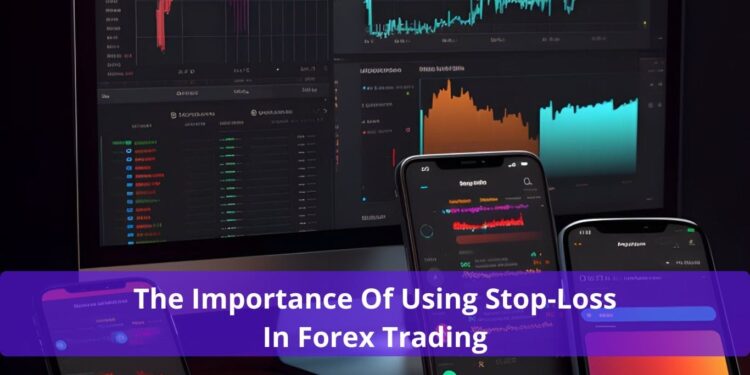In the fast-paced world of forex trading, the risk of losing money is high if you’re not equipped with the right tools. One such essential tool is the stop-loss order, designed to set a predetermined exit point to cap your losses. This article delves into why stop-loss orders are crucial in forex trading, how they function, and the advantages they offer.
Stick around to discover ways to enhance your trade protection!
Key Takeaways
- Stop-Loss Orders: These help limit your losses by closing trades when a price reaches a predetermined level, like 50 pips below your entry.
- Capital Protection: They safeguard your trading capital, prevent major losses, and encourage emotional discipline amid market fluctuations.
- Strategic Tools: Utilizing tools like support and resistance levels or the 1% rule can significantly enhance the effectiveness of your stop-loss orders.
- Variety of Options: Stop-loss orders come in types such as standard, trailing, and guaranteed, each catering to different risk management needs.
- Mistakes to Avoid: To boost your trading success, steer clear of setting stops too tightly or overlooking market volatility.
The Importance of Stop-Loss in Forex Trading
Stop-loss orders are indispensable in managing risks in forex trading. By setting a boundary on potential losses, they play a critical role in preserving your capital.
What is a Stop-Loss Order?
A stop-loss order is essentially a safeguard in trading. It instructs your broker to execute a sale or purchase of a currency pair once it hits a specific price. By defining this price—usually a few pips away from your entry point—you shield yourself from losing more than you can handle.
Traders can also employ stop-loss orders as buy stops. This feature enables you to buy at a potentially higher rate if prices surge quickly, allowing you to handle risks without continually watching the market.
How Does Stop-Loss Work in Forex?
When a stop-loss order is in place, it automatically closes a trade once the predefined price level is reached, effectively triggering a market order. For example, when a stop is set 50 pips beneath your entry price, the system springs into action the moment that level is achieved, though rapid price changes during volatile times can affect the final execution price slightly. By using stop-loss settings on trading platforms, you can effectively manage risks and safeguard your investment.
Role of Stop-Loss in Risk Management
Think of stop-loss orders as a safety net in forex trading. They curtail potential losses by closing trades the moment prices dip to a set level. This is especially important in volatile markets, where sudden shifts can lead to substantial losses.
The discipline fostered by using stop-loss orders also supports decision-making driven by strategy rather than panic. This means you can maintain control over risks without needing to monitor the market daily. By setting clear parameters, like the 1% rule or using support and resistance levels, your risk management becomes far more precise.
Benefits of Using Stop-Loss Orders
Stop-loss orders act as a guardrail, limiting potential losses in high-risk environments like forex. They also assist traders in adhering to their plans by eliminating the need for decisions driven by emotion.
Protection Against Significant Losses
Stop-loss orders serve as a line of defense if market trends work against a trader’s positions. For instance, should a currency pair fall unexpectedly, the stop-loss will automatically close the trade at the predefined level, staving off further losses and safeguarding capital.
Traders can utilize this mechanism to minimize financial damage amid volatile conditions. For example, if a $1,000 trade faces an adverse swing of 5%, a properly set stop-loss could preserve $950 by executing a timely exit. Without this measure, unchecked downturns might deplete far more of your account balance.
Helps Maintain Emotional Discipline
Risk management through stop-loss orders is instrumental in keeping emotions in check during market swings. With predefined stop-loss sizes, traders can stick to their trading plans, even when under pressure.
Without a preset limit, the market’s fluctuation could prompt poor decisions fueled by fear or greed, such as prematurely closing a trade or holding onto losses for too long. Stop-loss orders bring discipline through adherence to logical rules rather than emotions.
Enables Effective Trading Strategies
Stop-loss orders streamline trading strategies. By defining risk/reward ratios in advance, such as a 1:2 ratio, traders can set a stop-loss at 50 pips while targeting a profit margin of 100 pips. This supports consistent actions without requiring constant market scrutiny.
By incorporating stop losses, traders are better positioned to stick to their plans within the forex trading system, reducing impulsive decisions caused by emotions or sudden currency rate changes. This clear system allows a sharper focus on overarching goals and successful trades over time.
Types of Stop-Loss Orders
Exploring the different stop-loss order types can help traders make informed decisions on managing risks effectively. Continue reading to understand each type’s unique benefits.
Standard Stop-Loss
This type of order involves setting a fixed price point to exit a trade. Traders use it to curtail losses in adverse market trends. For instance, a forex trader might fix this stop-loss at 50 pips below the entry price for a sell order.
Upon reaching this level, the stop-loss transforms into a market order and immediately closes the position. Its use is prevalent in leveraged trading environments like CFDs or forex, as it helps manage risk and shield accounts from considerable losses. With well-defined boundaries, even beginners can engage in trading without overextending their risk limits.
Trailing Stop-Loss
A trailing stop-loss moves in accordance with the market. It not only curbs risks but also locks in profits. If a trader places a trailing stop 167 pips below the entry price of EUR/USD, it trails as the price climbs—constantly maintaining that 167-pip distance.
This style of order reduces manual labor and adapts to volatility, making it desirable in forex trading. It also provides an extra layer of security, sometimes mandated by brokers, guarding against surprising declines that might negate previously wise positioning.
Guaranteed Stop-Loss
This order type guarantees trade closure at the exact price set, protecting against slippage amid sudden volatility. Brokers might levy an additional fee for this service, though it ensures security against unexpected losses.
Traders who use guaranteed stop-loss manage risks more effectively in rapid markets like forex. For instance, if a trader sets a stop-loss at $1.20 on a currency pair, the broker commits to executing the trade at that price, even during sharp dips or gaps. This strategy prevents surprises and enhances trading strategy management.
How to Effectively Set a Stop-Loss
Mastering the art of setting a stop-loss is crucial for trade protection. Traders should emphasize key price levels and employ accurate calculations to achieve precision.
Analyzing Support and Resistance Levels
Support and resistance represent critical pricing points on charts, where the market has historically reversed or bounced. By examining historical data, traders can better anticipate potential movements.
For example, if a currency pair consistently rises near $1.2000 but fails to advance, that price becomes a resistance level. Similarly, if the pair repeatedly falls close to $1.1000 and recovers, that’s a support level. Grasping these levels allows traders to place their stop-loss orders judiciously.
Using the Risk-Reward Ratio
Traders leverage the risk-reward ratio to weigh prospective gains against prospective losses. A common benchmark is a 1:2 ratio, where risking $100 aspires to a $200 profit. This equilibrium is key in avoiding unnecessary losses.
Even a 1:1 ratio can suffice if the trader wins over 50% of their trades. By employing this approach, traders can wisely determine stop-loss and take-profit positions. For instance, establishing a stop-loss 10 pips below the entry while targeting a take-profit 20 pips above fits a 1:2 plan perfectly.
Applying the 1% Rule
To ensure minimal risk, restrict each trade to just 1% of the account’s total value. If your account holds $10,000, your risk should not exceed $100 per trade. This limits potential losses and prevents substantial setbacks.
Integrate technical analysis such as support and resistance levels to calculate precise stop-loss orders with the 1% rule, enhancing trading strategies and leading to common mistakes to avoid next.
Common Mistakes When Using Stop-Loss
Misplacing stop-loss levels is a frequent pitfall for traders, often leading to preventable losses and endangering the success of their strategies.
Setting the Stop-Loss Too Tight
Setting a stop-loss too narrowly can result in frequent losses, as minor price changes might activate a sale before the market recovers. For example, placing a stop-loss just 5 pips distant in a volatile market risks unnecessary trade losses.
Market volatility demands room for natural movement. With overly tight stops, trades often conclude prematurely, limiting profit prospects. Analyzing support and resistance levels can offer better guidance for stop order placement.
Ignoring Market Volatility
Market volatility can cause a stop-loss order to trigger unexpectedly at unfavorable prices. Rapid market shifts may execute the stop-loss far lower than anticipated, swelling losses. Overlooking these fluctuations jeopardizes a trader’s control over their positions.
Forex markets are highly unpredictable, with sudden price surges or drops that can outpace planned stop levels. While tools like guaranteed stop-loss orders can mitigate associated risks, they typically involve additional fees.
Beginners should assess market trends and news impacting asset prices before establishing stop limits in volatile conditions.
Over-reliance on Automated Systems
Automated systems may overlook sudden market changes. Governed by preset rules, they lack the capacity to adapt to significant volatility shifts, which can result in ineffective stop-loss orders during unforeseen events.
A manual review is essential. Traders must update their stop-loss levels based on real-time data, providing greater control over losses in forex markets.
Conclusion
In conclusion, stop-loss orders are crucial for strategic forex trading. They shield traders from substantial losses and help regulate emotions. Strategies like trailing stop-losses can optimize profits as market conditions evolve favorably.
Every trader should master setting appropriate stop-loss levels based on individual goals and risks. This invaluable tool supports the creation of more secure and efficient trading plans in the ever-changing market landscape.

















